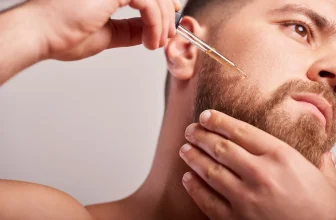The Importance of Proper Hairline Design in African American Hair Transplants
In recent years, hair transplant procedures have become an increasingly popular solution for those struggling with hair loss or thinning. For African American individuals, these treatments can be particularly transformative, granting newfound confidence and enhancing one’s self-image. However, one aspect that cannot be overlooked in ensuring successful and natural-looking results is the proper design of the hairline.
In this article, we will delve into the importance of appropriate hairline design in African American hair transplants, discussing the unique challenges and considerations that come into play.
A well-designed hairline is crucial in achieving a balanced, harmonious, and age-appropriate appearance. This is particularly true for African American hair transplants, where the distinctive texture, curl pattern, and growth direction demand meticulous planning and execution.
By understanding the subtleties of hairline design, surgeons and patients alike can work together to create results that seamlessly blend with the patient’s existing hair and facial features, promoting a natural and aesthetically pleasing outcome.
Understanding the Unique Characteristics of African American Hair
African American hair is known for its distinct characteristics, which set it apart from other types. Its unique texture, curl pattern, and growth direction play a crucial role in determining the best approach to transplantation. Understanding these attributes is essential to ensure the success of the procedure and achieve natural-looking results.
One of the most notable features of African American hair is its tightly coiled or curly texture. This characteristic provides both challenges and benefits during the transplant process. While the curls can provide increased coverage and a fuller appearance with fewer grafts, the delicate nature of the follicles demands careful handling and precise extraction techniques.
Additionally, the growth direction of African American hair may be more variable compared to other types, requiring the transplant surgeon to pay close attention to the natural patterns when placing the grafts. This meticulous attention to detail is vital to create a seamless, natural appearance that blends harmoniously with the patient’s existing hair.
Key Principles of Hairline Design for African American Hair Transplants
When it comes to hairline design for African American hair transplants, several key principles must be taken into account to achieve the most natural and aesthetically pleasing outcome. A well-designed hairline complements the patient’s unique facial features, taking into consideration factors such as head shape, facial symmetry, and age. By adhering to these principles, both surgeons and patients can ensure a successful transplant that results in a harmonious and balanced appearance.
- Firstly, customizing the hairline shape is crucial. African American hairlines often feature a more rounded or curved shape, which should be replicated in the transplant design to maintain an authentic look.
- Secondly, establishing the correct hairline position is vital. This involves finding the optimal balance between the patient’s existing hair, eyebrows, and facial proportions.
- Lastly, incorporating irregularities is essential for achieving a natural appearance. Hairlines are rarely perfectly symmetrical or uniformly dense, so incorporating subtle variations in hairline design can help to mimic the intricacies found in growth patterns.
By considering these key principles, surgeons can create a hairline that seamlessly blends with the patient’s existing hair and enhances their overall appearance.
The Hair Transplant Process for African American Patients
The hair transplant process for African American patients, while sharing similarities with other types, requires special attention to unique characteristics and challenges. From selecting the most suitable extraction method to ensuring optimal graft survival, the entire procedure demands meticulous planning and execution.
In the following subsections, we will delve into the specifics of Follicular Unit Extraction (FUE) versus Follicular Unit Transplantation (FUT), discuss strategies for maximizing graft survival, and explore postoperative care and recovery.
-
Follicular Unit Extraction (FUE) vs. Follicular Unit Transplantation (FUT)
Follicular Unit Extraction (FUE) and Follicular Unit Transplantation (FUT) are the two primary hair transplant techniques employed worldwide. While both methods can be effective for African American patients, FUE has emerged as the more advanced and increasingly preferred option due to its minimally invasive nature and ability to yield natural-looking results.
FUE involves the individual extraction of follicles from the donor area, typically located at the back and sides of the head, followed by their careful placement into the recipient area. This method is particularly well-suited to African American hair, as it allows for precise handling of the delicate, curly follicles, reducing the risk of transection and damage.
In contrast, FUT involves the removal of a strip of skin containing hair follicles, which is then dissected into individual grafts before transplantation. While FUT can also yield satisfactory results, it often leaves a linear scar at the donor site, making FUE a more attractive option for patients seeking a less invasive and more discreet procedure.
As a result, FUE has become the leading hair transplant technique for African American patients, offering the potential for exceptional results with minimal scarring and a faster recovery time.
-
Ensuring Optimal Graft Survival
Ensuring optimal graft survival is a critical aspect of the transplant process for African American patients. Due to the unique characteristics of tightly coiled hair follicles, extra care must be taken during extraction, handling, and implantation. To maximize graft survival, surgeons should utilize specialized tools and techniques designed to accommodate the delicate nature of African American hair follicles.
Additionally, careful attention must be paid to the angle and direction of implantation to mimic the patient’s natural hair growth pattern. Postoperative care, including following the surgeon’s instructions for cleansing, medication, and activity restrictions, is equally important in promoting a healthy recovery and optimal graft survival. By diligently adhering to these best practices, both patients and surgeons can help to ensure the long-term success of the hair transplant procedure.
-
Postoperative Care and Recovery
Postoperative care and recovery play a vital role in the overall success of African American hair transplantation. As each patient’s healing process may vary, it is essential to closely follow the surgeon’s specific instructions for optimal results.
Proper care typically includes cleaning the scalp gently with prescribed shampoos, applying topical medications or taking oral medications as directed, and avoiding exposure to direct sunlight and strenuous activities for a specified period. Additionally, patients should expect some initial shedding of the transplanted hairs, which is a normal part of the recovery process.
By adhering to these postoperative care guidelines, African American patients can help to minimize complications, promote graft survival, and ultimately achieve the desired outcome from their hair transplant procedure.
Conclusion
In conclusion, the importance of proper hairline design in African American hair transplants cannot be overstated. The unique characteristics and challenges associated with this hair type demand extra care and precision throughout the entire transplantation process. Ensuring a successful and natural-looking outcome relies heavily on meticulous planning, customized hairline design, and adherence to postoperative care instructions.
As African American hair transplantation requires specialized knowledge and techniques, it is essential to choose a clinic with a proven track record in this area. Hair of Istanbul is one such clinic, boasting extensive experience and expertise in performing hair transplants for African American patients. By entrusting your hair restoration journey to a reputable clinic like Hair of Istanbul, you can be confident in receiving the highest quality care and a hairline design that seamlessly integrates with your unique features, ultimately enhancing your appearance and boosting your self-confidence.







